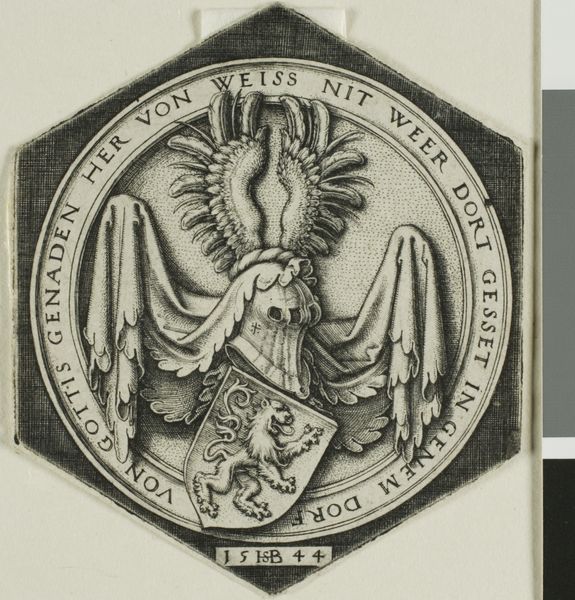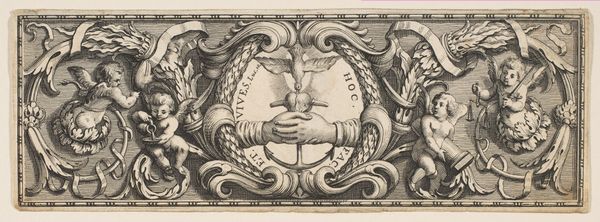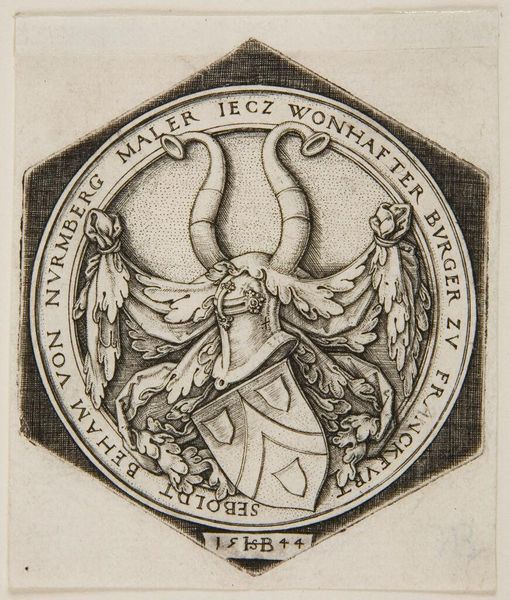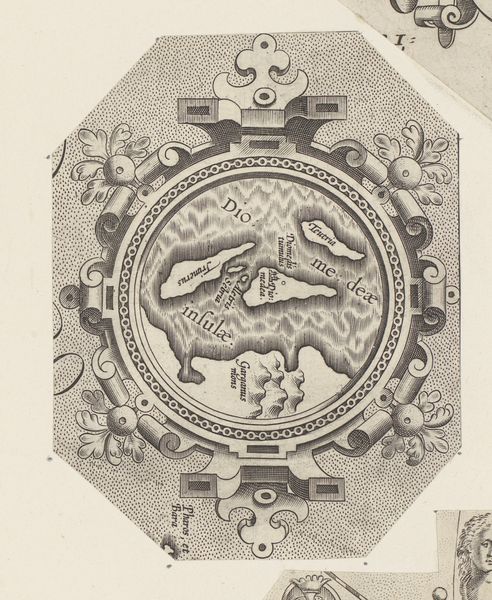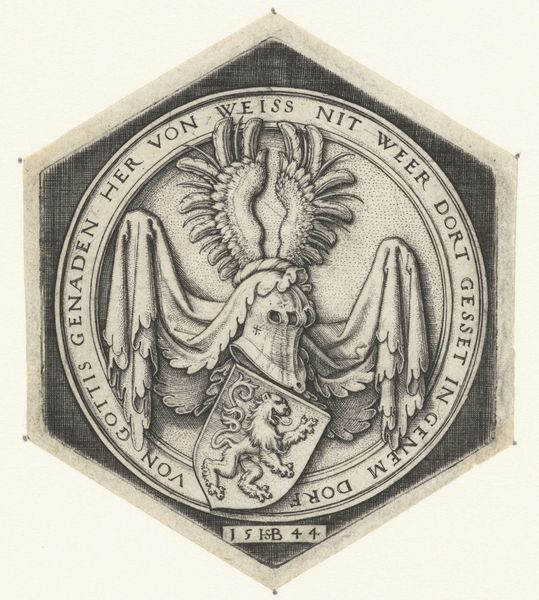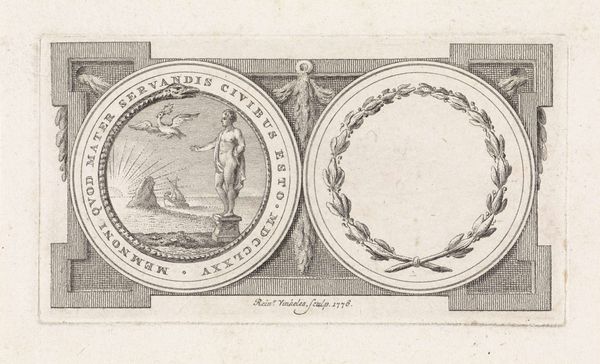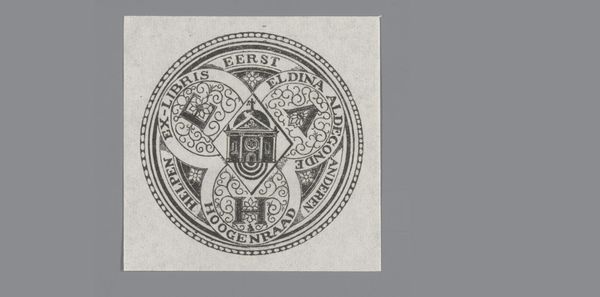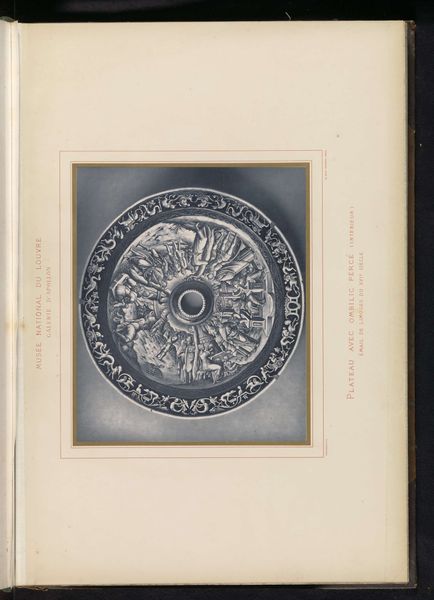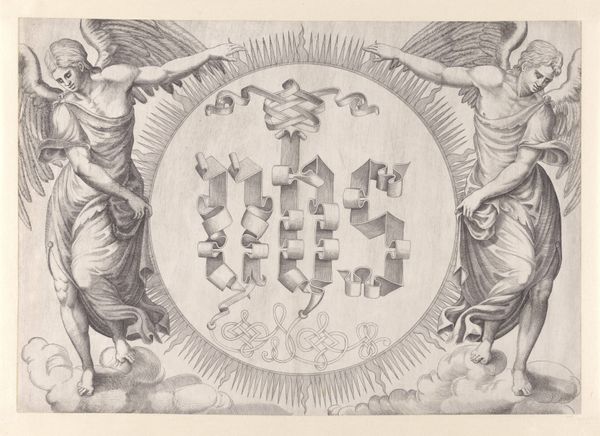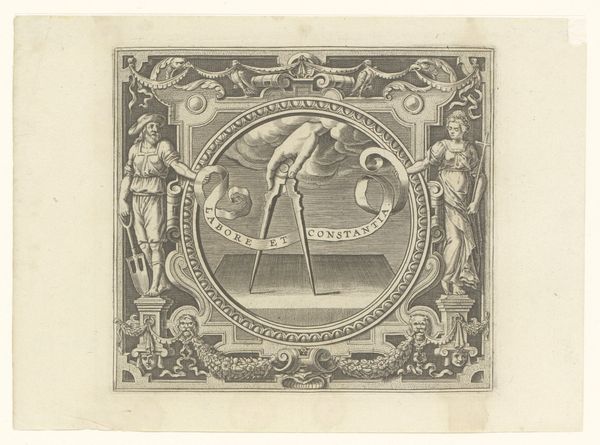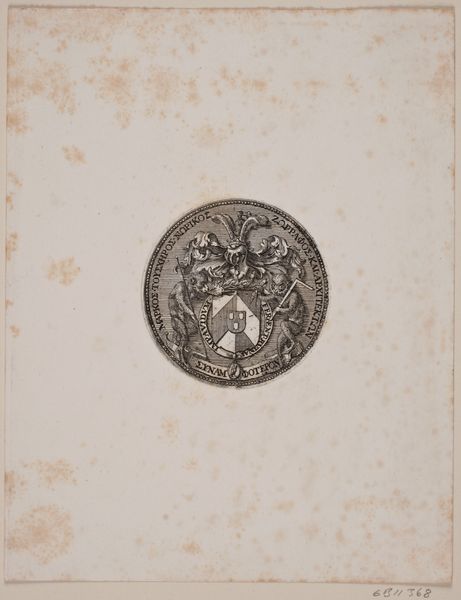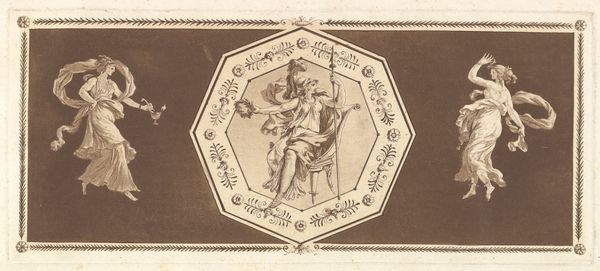
drawing, graphic-art, print, paper, engraving
#
drawing
#
graphic-art
#
medieval
# print
#
paper
#
engraving
Dimensions: 69 × 59 mm (sheet, trimmed to image)
Copyright: Public Domain
Curator: Here we have Sebald Beham’s “Coat of Arms of Sebald Beham,” a striking engraving from 1544. What are your first thoughts? Editor: Stark, precise... almost obsessively detailed. It feels very controlled, contained within that strong circular frame. And, honestly, a little intimidating. Like looking at a bouncer’s tattoo if that bouncer was a medieval noble. Curator: Yes, exactly. Beham was quite interested in asserting social standing. What’s fascinating here is how a print – usually considered a more democratic medium – is used to communicate this very aristocratic idea of lineage and identity. Notice the elaborate helmet, the swirling foliage... Editor: Those horns jutting out from the top of the helmet, are those… buffalo horns? Or maybe some symbolic reference that’s completely lost on me. It's interesting that as someone looks back at the Middle Ages they feel very distant now, since symbols and heraldry such as this used to hold significant meaning. Curator: Heraldry, indeed. These are the kind of symbols that once spoke volumes. In this case, these are probably meant to highlight a lineage of accomplishment or the individual aspirations tied into Beham's self image. That being said, such status affirmations always are also tied into sociopolitical structures that dictated one's class standing. Beham positions himself within it here. Editor: I'm interested by how he depicts himself as a painter, then makes his living via graphic art – printmaking – thus producing what one may term an object to mass dissemination. It makes the very notion of such family "pride" a rather broad, and maybe less effective message. Did people buy and circulate these engravings? Curator: Yes, prints were actively traded in Beham's time. He was indeed a master of the small scale engraving. And while his ambitions, as expressed here, appear self-focused and family centered, engravings of coats-of-arms played a key role in public ceremonies and the rituals that cemented a ruler’s legitimacy. It played a crucial part in shaping a shared social narrative. Editor: So, the act of distributing images becomes as important, if not more so, than the status it is meant to convey. In the end, as this image winds up in a museum setting as itself an "artwork," that history comes together to inform its meaning. What I see now is the layered ways in which imagery operates. Curator: Agreed. Beham's creation invites us to explore both personal and social layers, even beyond its heraldic framework. Editor: And maybe, just maybe, understand why some bouncers have really elaborate tattoos.
Comments
No comments
Be the first to comment and join the conversation on the ultimate creative platform.
